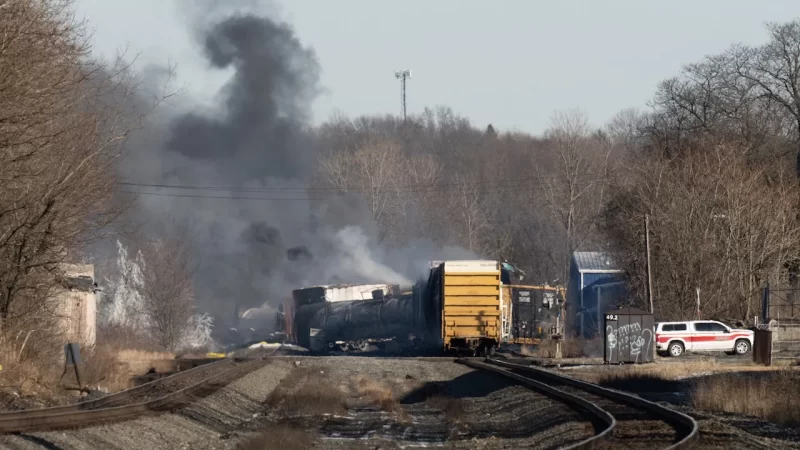Federal regulators said Friday that railroads need to re-examine how they assemble their trains after a string of derailments in recent years that were at least partly caused by the way empty and loaded cars were mixed together with locomotives.
Heavy cars at the back of a train can push and pull against empty cars in the middle of a train as it goes over hills and around corners. Those forces have become more of a problem as the industry increasingly relies on longer trains with a wide variety of freight aboard.
Another factor complicating the issue is the industry’s practice of placing locomotives throughout trains. The locomotives can amplify the forces if they’re not used correctly.
The Federal Railroad Administration’s advisory cites six derailments since 2021 where those forces were a factor. They include a Norfolk Southern derailment near Springfield, Ohio, last month and a 2021 Union Pacific derailment that forced the evacuation of Sibley, Iowa, for three days. Regulators say these kind of derailments are happening with increasing frequency.
But regulators didn’t mention the fiery February derailment near East Palestine, Ohio, that prompted much of the recent concern nationwide about railroad safety as an example of this problem. The National Transportation Safety Board has said that an overheated bearing that caused an axle to fail on one of the railcars likely caused that derailment.
But it is still early in the East Palestine investigation, so it’s not clear if the makeup of the train was also a factor.
‘Railroads must prioritize proper train makeup to maintain safety, prevent accidents, and optimize train performance,’ the railroad administration said in the advisory. ‘Further, all operating employees must be properly trained in these technologies and the handling of complex trains to ensure safe operation and minimize human error.’
All of the derailments the FRA mentioned involved trains with at least 125 cars. In every case an empty car was the first to come off the tracks. The order doesn’t specifically single out long trains, but the kind of forces regulators are concerned about are amplified in longer trains, especially if large blocks of empty cars are placed in the middle or front of a train. In three of the six derailments, hazardous chemicals were released, highlighting the potential dangers of these accidents.
The major freight railroads have all overhauled their operations in recent years to rely more on longer trains so they don’t need as many crews or locomotives. Now trains routinely stretch longer than two or even three miles long.
As a train moves across uneven territory, its front half might be getting pulled up a hill while the back half is coming down and pushing forward against the rest of the cars. Those dynamics make it difficult for the engineer to manage.
‘Think about going thru undulating territory sort of like a Slinky. You’re either trying to keep it stretched out or you’re trying to keep it all bunched together to control the forces from going in and out because that’s what causes derailments. And it causes train separations,’ said Mark Wallace, who is second-highest ranking officer with the Brotherhood of Locomotive Engineers and Trainmen union. ‘The way to prevent this stuff from happening is to control the train lengths.’
A spokeswoman for the Association of American Railroads trade group said the major freight railroads already use sophisticated computer software to help them build trains and properly distribute the weight. Not only is it important to consider where to put the loaded cars, but railroads also have to factor in that some goods are heavier than others and that the weight of the liquid inside a tank car will shift as the train moves. AAR spokeswoman Jessica Kahanek said the railroads will consider regulators’ recommendations.
‘The industry is committed to productive conversations about how we continue to advance our shared goal of ensuring the safety of the trains that serve customers and communities across the nation,’ Kahanek said.
A spokeswoman for Union Pacific, which handled three of the trains highlighted in the advisory, said the railroad is using high-tech tools to monitor train forces and makes adjustments as needed. Kristen South said UP has seen derailments decline along its network last year and this year, even as maximum train length reached 9,329 feet.
‘We constantly evaluate our processes and continue to work with government agencies and industry partners to further improve safety,’ South said.
Norfolk Southern officials declined to comment on the advisory. That railroad was responsible for two of the derailments in the advisory, as well as the one in East Palestine.
Since the East Palestine derailment, regulators and members of Congress have urged the railroads to take additional steps to prevent derailments. Two different federal agencies have also announced investigations of Norfolk Southern’s safety record, and that railroad’s CEO has had to testify twice at congressional hearings.

